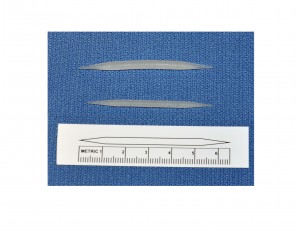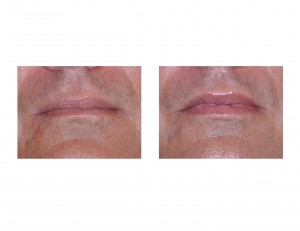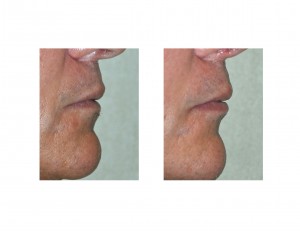Background: Lip augmentation is a popular procedure that is most commonly done with the use of injectable fillers. Any of the family of hyaluronic-acid based fillers offers an immediate improvement in which the material can be placed in a variety of lip locations to create both increased size and/or enhancement of various lip features. Its only downside is that it is temporary and must be repeated for the effects to be maintained.
The overwhelming number of lip augmentations is done in women with only an occasional man ever having the procedure. The reasons for this is the obvious preference for fuller and larger lips in women from a fashion and beauty perspective. While fuller lips in men can also be attractive, it is not a primary facial feature that necessarily makes for a strong masculine appearance. The other reasons lip augmentations are done a lot less in men is that they, in general, are less tolerant of the injectable experience.

Case Study: This 45 year-old male was undergoing a variety of procedures for facial enhancement and was interested in doing a permanent lip augmentation at the same time. Options discussed included fat injections, a lip lift, an internal mucosal advancement and silicone lip implants. He wanted the simplest but the most reliable method that would ensure a sustained augmentation effect.


Case Highlights:
1) Lip augmentation in men is uncommon and they are less likely to choose temporary injectable fillers.
2) Silicone implants (PermaLip) offers a permanent option for lip augmentation when one has tried and/or does not prefer injectable fillers.
3) Silicone implants slide easily into place through small incisions at the corners of the mouth and are available in sizes of 3, 4 and 5mms diameters with lengths from 55mm to 65mms. Men will almost always need the longest lengths.
Dr. Barry Eppley
Indianapolis, Indiana


